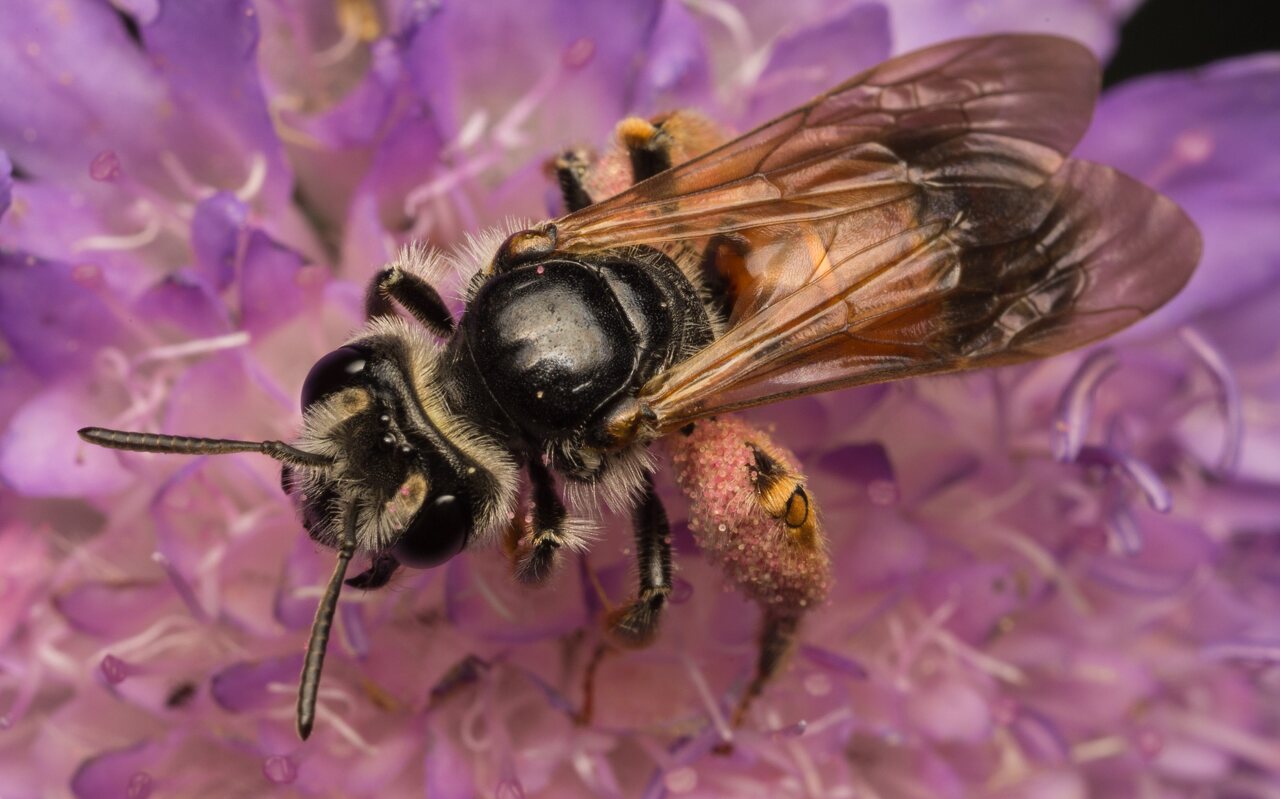
Andrena hattorfiana female · buožaininė smėliabitė ♀
- large scabious mining bee
- Knautien-Sandbiene
- buožaininė smėliabitė
- pszczolinka świerzbnicówka
This endangered solitary bee is present in most of Europe and in the Near East. The adults grow up to 13–16 mm long. They have a black-brown body with sparse light hair, while the first and the second abdominal segment are reddish. The females have a pollen basket of curved hairs on the sides of the thorax. This mining bee which occurs in two colour forms, more noticeably in females than in males. In females the most frequent form has a largely black gaster, whereas in the other form, tergites 1-2 (occasionally 3) and sternite 2 are conspicuously marked with red. Males usually have black gasters, though in some, tergites 1-3 are posteriorly marked with red. The slimmer males have a whitish face with two small black spots.
Andrena hattorfiana is an oligolectic species, feeding on cardiac plants (Dipsacaceae); The main pollen source in the area is Knautia arvensis, the secondary pollen source is Knautia dipsacifolia. If the Knautia already wither before the end of the flight time, pollen of Scabiosa columbaria is also collected.
The females usually lay eggs in a nest excavated by themselves in sandy soils. Nest has five to ten brood cells, each having one egg and pollen as food for the larva. Every day there is one offspring produced in good weather conditions for foraging, and five to ten in a lifetime. These nests are made in dry parts of a traditionally managed hay field in medium pressure horse-graze pastures with sparse vegetation and on human-trampled paths. These bees relies heavily on pollen, that is almost like a species saving resource.
‥
0 comments
Add a comment